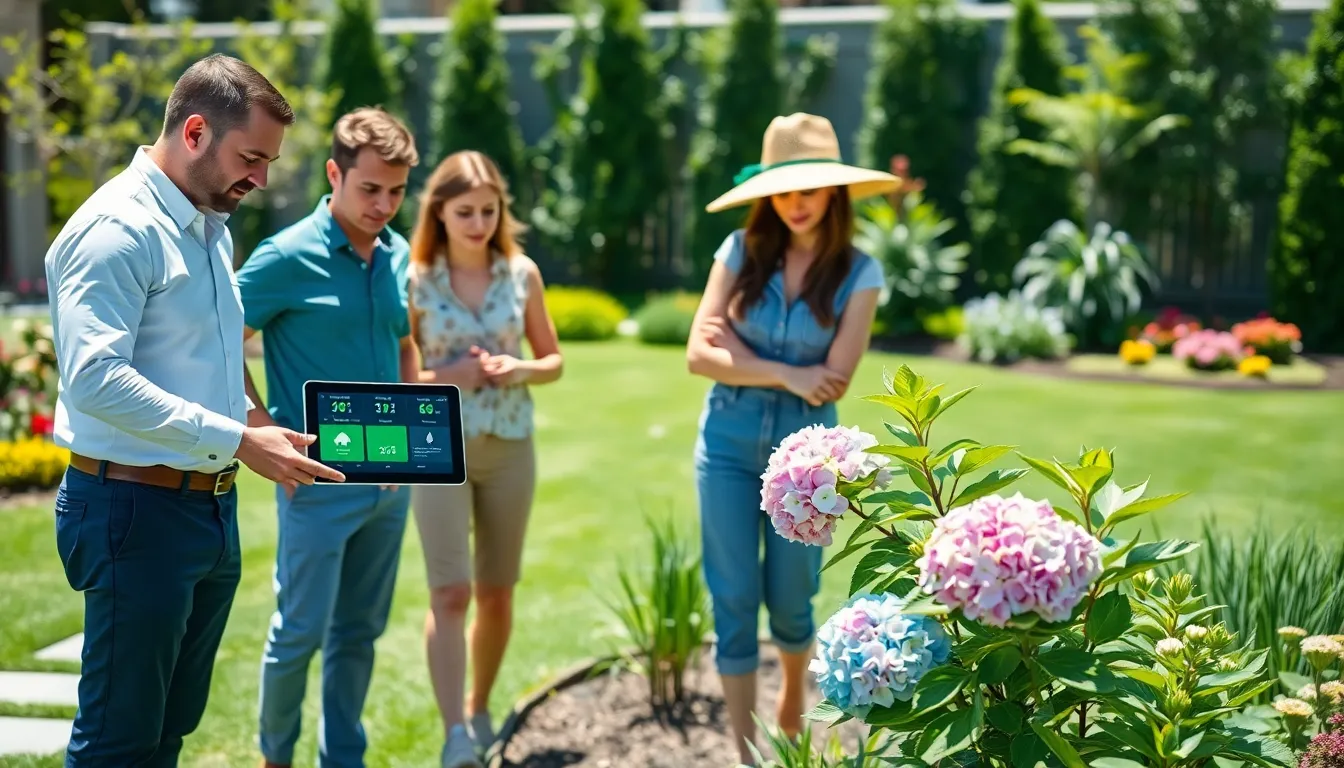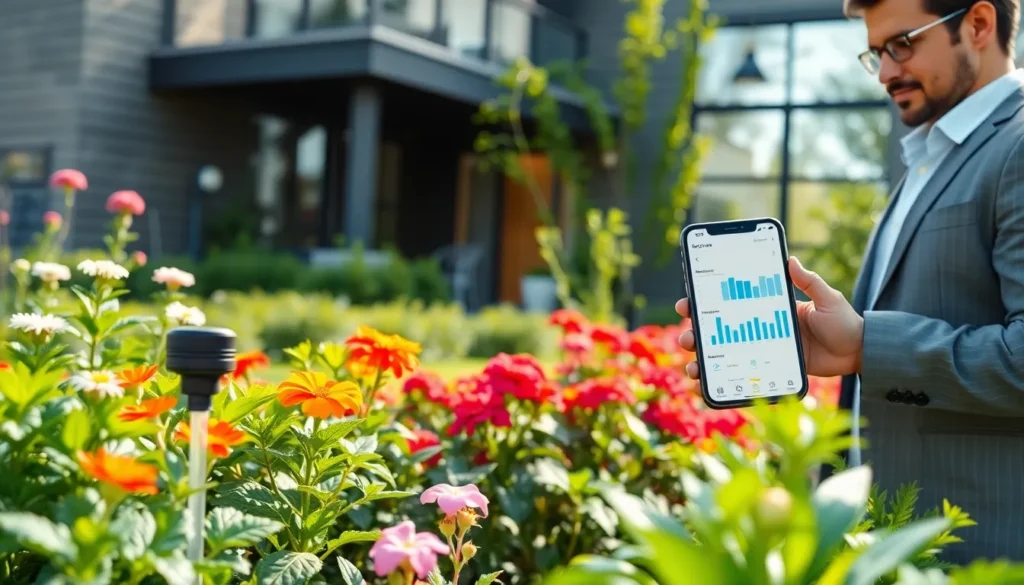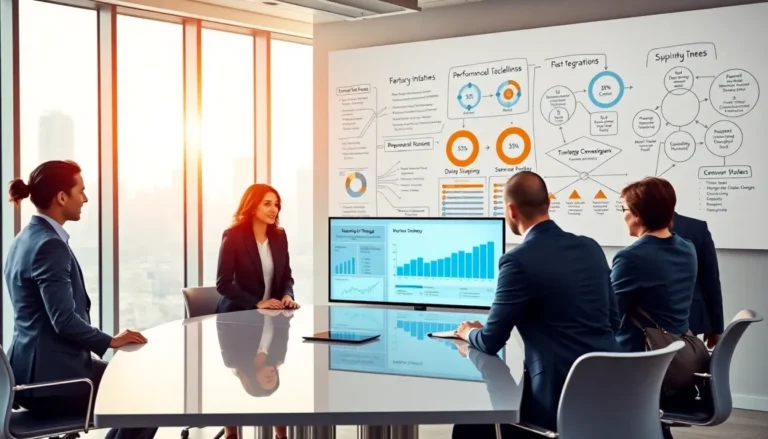Table of Contents
TogglePicture this: a garden that knows when to drink, where the flowers bloom more vibrantly than ever before, and your water bills? They’re shrinking faster than a puddle in July. Welcome to the era of smart irrigation, where technology meets nature in a harmonious, water-saving dance. This isn’t just about sprinklers any more: it’s about using brainpower, big data, and sensors to optimize water use across properties. So let’s immerse and explore how smart irrigation systems are changing the game, one droplet at a time.
Understanding Smart Irrigation Systems

Smart irrigation systems are the superheroes of modern landscaping, employing advanced technology to ensure plants get the precise amount of water they need. These systems often integrate sensors, weather data, and AI-driven software to monitor soil moisture and environmental conditions. Imagine sensors in your garden that communicate weather forecasts and soil health, adjusting your watering schedule automatically. This approach to irrigation eliminates waste, empowers smarter energy use, and transforms gardens into sustainable ecosystems.
Besides, smart systems can be programmed to adjust based on specific plant needs. For instance, a garden filled with hydrangeas won’t require the same watering routine as a cactus collection. The beauty lies in the adaptability of smart irrigation, making it suitable for lawns, vegetable gardens, and commercial properties alike.
Benefits of Smart Irrigation
The perks of smart irrigation are numerous, to say the least. Initially, there’s the amount of water saved. Studies reveal that smart systems can reduce water usage by up to 50%. Imagine that kind of savings in drought-prone areas, it’s a game-changer.
But it’s not just about water conservation. With intelligent scheduling, plants receive the optimal amount of hydration, resulting in healthier growth. A lush garden looks nice, but it also boosts property value. Plus, less water usage means lower utility bills, a reason that’s hard to argue against.
Time is another advantage. Manual watering systems take time and effort. Smart irrigation solutions streamline that process, allowing property owners to enjoy more leisure time while ensuring their landscapes thrive.
Key Technologies in Smart Irrigation
Let’s investigate into the tech that makes smart irrigation what it is today. Central to these systems are soil moisture sensors, which provide real-time data on moisture levels. This means that plants only get watered when they actually need it.
Next up is the weather-based controller. These devices use local weather forecasts to adjust watering schedules based on predicted rainfall or temperature increases. Combine this with remote access through mobile apps, and users can manage their irrigation systems from anywhere. Imagine being on vacation, and you can still keep an eye on your garden’s watering needs.
Also, the evolution of AI and machine learning is adding layers of sophistication. Some smart irrigation systems learn from historical data, improving their efficiency over time to become even smarter with minimal user input. This means more effective management and less guesswork every season.
Implementing Smart Irrigation in Your Property
So, how can someone jump on the smart irrigation bandwagon? First, start with a comprehensive assessment of the landscape. Take note of varying plant types, soil composition, and current watering methods. Understanding these factors provides a solid foundation for integrating smart irrigation.
Next, choose the right system that fits your needs. Options range from basic timers to advanced systems with soil sensors and data analytics capabilities. Once selected, installation is typically quick, sometimes even DIY-friendly.
After installation, familiarizing oneself with the software interface is key. Most smart irrigation systems offer user-friendly apps that guide you through setup, enabling custom schedules and preferences.
Challenges and Considerations
Even though the impressive advantages, implementing smart irrigation doesn’t come without challenges. One primary consideration is the initial cost. Though many may balk at the upfront investment, the long-term savings typically outweigh the costs in water bills and maintenance.
Tech adoption is another hurdle, some users may find high-tech systems overwhelming at first. Extra training or consulting with industry experts may be necessary to ease into the new technology. Also, ongoing maintenance of sensors and software updates should be on the radar to keep everything running smoothly.
Finally, environmental changes need to be monitored over time. As climates shift, adjusting irrigation practices and systems accordingly can be vital for continued effectiveness.
The Future of Smart Irrigation in Real Estate
Looking ahead, the integration of smart irrigation within real estate seems inevitable. As property developers and homeowners become increasingly eco-conscious, investing in sustainable technology will skyrocket, not to mention enhance property attractiveness. In fact, buyers are now prioritizing energy-efficient homes with advanced tech features.
Besides, smart irrigation systems could potentially be linked with other smart home technologies, creating a cohesive ecosystem that optimizes energy and resource use. Imagine a future where your home infrastructure not only calculates energy needs but also seamlessly manages water requirements.
Incorporating such systems now could yield significant advantages as regulations around water use become stricter, placing savvy real estate owners one step ahead in the sustainable market.





